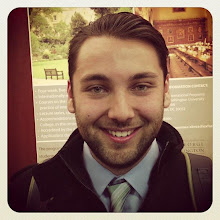Our first stop was Roskilde Cathedral, a magnificent red-brick building that was build during the 12th and 13th centuries, when Denmark was still a catholic state. It incorporates both Romanesque and Gothic architecture, and is listed as a UNESCO World Heritage Site. What makes this cathedral particularly important to Danish history, besides its art and architecture, is that it is the final resting place of almost forty members of the Danish royal family, going back to Svend Tveskæg (Sweyn the Forkbeard), who died in the year 1014. It also houses many of the Christians and Frederiks. Since 1513, every King of Denmark has been named either Frederik or Christian, with the exception of the current Queen Margrethe II. The current Crown Prince will become Frederik X, and the next Christian will be the eleventh. These monarchs, and their queens, are placed in exquisite coffins around the cathedral, many in side chapels off of the main cathedral. I though it would be best just to show you some of the pictures of the cathedral, with brief captions.
Tomb of Frederik II, King of Denmark-Norway. Lived 1534-1588.

Frederik V of Denmark-Norway. Lived 1726-1766
The Main Altar
The Queen Margrete I of Denmark, Norway, and Sweden. Lived 1353-1412. Founder of the Kalmar Union.
The Main Organ
The ceiling in on of the side-rooms.
Frederik VIII with his wife Louise of Sweden-Norway. Lived 1843-1912 and 1851-1926.
And finally, the outside of the cathedral.
I also visited the Viking Ship Museum. In the 1960’s, a group of fishermen discovered several Viking ships on the bottom of the fjord floor. It turns out that at sometime towards the end of the Viking Era, several older ships were intentionally scuttled in the fjord, blocking all but one of the pathways into the harbor. This prevented others who were not familiar with the fjord from reaching the villages within. The ships were excavated and conserved with wax, so that today we can see what some of these ships might have looked like. Just to show how far the Vikings explored, several of the ships were from Denmark, another from Norway, and one from Ireland. Here is a photo what remain of the Viking ships from Roskilde fjord.
The ships were also used to make modern reproductions, used to study Viking technology. They have sailed all over the Northern Atlantic using nothing more than the wind, and man powered rowing.
This weekend I am going to be visited the Danish-German Border region, to learn about Danish minorities in Germany, and German minorities in Denmark. I should have some more interesting posts after returning from this short study-tour.










